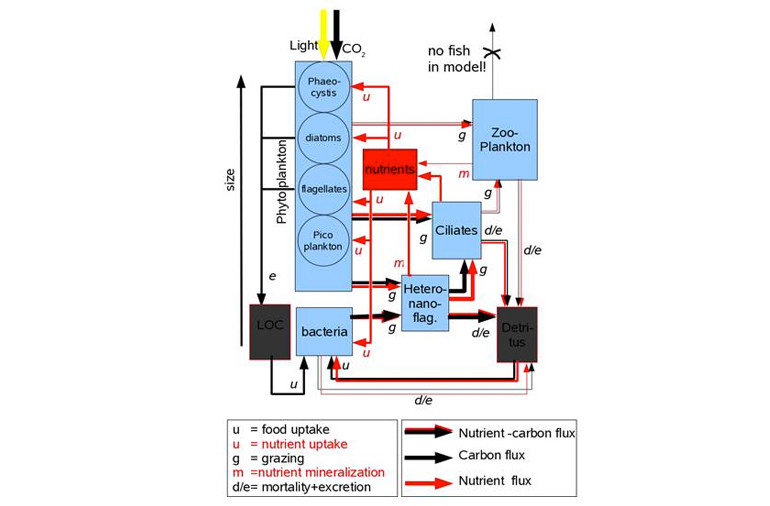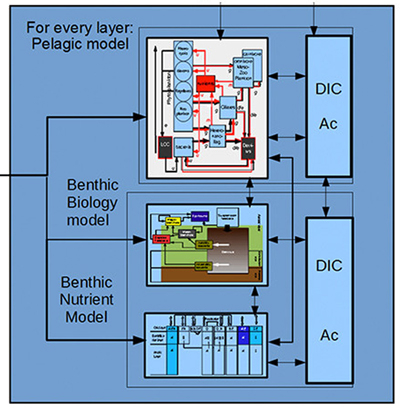Pelagic model
Pelagic productivity in coastal waters is besides the light constrained by nutrient availability. Nutrient availability limits the production of phytoplankton, which forms the basis of the food web, providing food for primary consumers, such as protozoa and meso-zooplankton, which the higher-level consumers (fish, squid) prey upon. In nutrient-replete conditions unicellular phytoplankton in the 5 to 100 µm size range is responsible for the bulk of the primary production in the sea and grazers such as meso-zooplankton control the phytoplankton biomass.

However, as soon as nutrients are depleted, most primary production is generated by still smaller (0.5 - 10 µm) algae (cyano-bacteria and pico-phytoplankton). The main grazers under those circumstances are the heterotrophic nanoflagellates and the ciliates which are considered the dominant grazers of both bacteria and phytoplankton in the sea. The pelagic food web representation in this model now allows for complex interactions between the classical (phytoplankton, zooplankton, fish) food chain and the microbial food web. (phytoplankton, DOC/nutrients, bacterioplankton and microzooplankton). Larger consumers, such as meso-zooplankton in this way are (indirectly) supported by the bacterioplankton, which is too small for them to graze directly.
